Everyone has a phone these days. We use it for calling, watching videos and movies, chatting, socializing. In fact, it has become a full part of our lives. And if your phone is more than just a gaming device, you should put more security features. If some of your personal and sensitive information is on your Google account, then that’s all the more reason to add some extra layer of protection to keep your phone safe. And this is where Google Authenticator comes in.
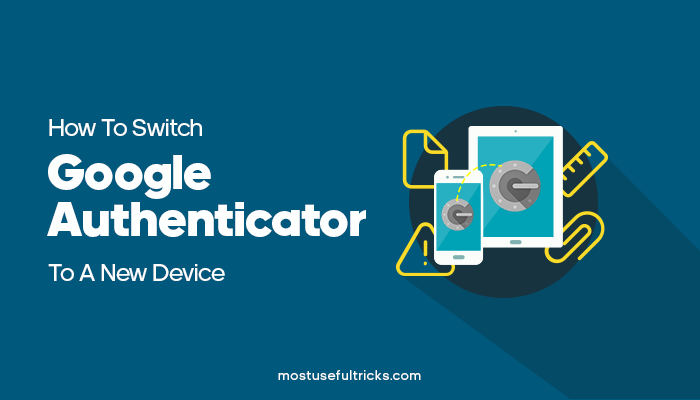
In this post, we’ll explore:
What is Google Authenticator?
The Google Authenticator is an app and a part of the 2-Step verification process each time you sign in to your account on a new device or browser. This provides a better layer of protection instead of just using a simple password to log in.
In short, when someone else tries to log in to your account on a new device, it will not be as easy as entering your password. Furthermore, even if someone knows your password, he or she will not be able to gain access to your account. Not unless an SMS, a phone call, or an app provides someone with a new and unique authentication code.
This authentication code will only be available to the device where it is installed along with your account. The 2-step verification code will make hacking your Google account more difficult for malicious entities. Recommended Check: The Best VPN Services For 2021.
How to Move Google Authenticator to a New Device
If you are getting a new smartphone and you want to move the Google Authenticator app on it, we got that covered for you. This is a brief guide on how to switch Google Authenticator to a new device. In this guide, you will need to have access to your new smartphone and a PC. Let’s get started.
- On your new smartphone, log in to your Google account. Since you still have the Authenticator on your old device, you will need to get the authentication code from there. If not, use the registered phone number to receive the Authentication code via SMS or phone call.
- Once you have logged into your account on the new smartphone, launch Play Store on it.
- Now Search for the Google Authenticator app on Play Store.
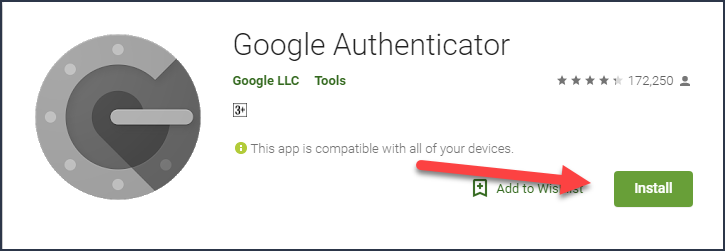
- Tap the Install button.
- On your PC, open any web browser (preferably Google Chrome) and log in to your account if you have not done it yet.
- You will need an authentication code from the old smartphone again to do this.
- When your account is finally logged in on the web browser, open a new tab and click on the 9-dots button on the screen’s top-left corner.
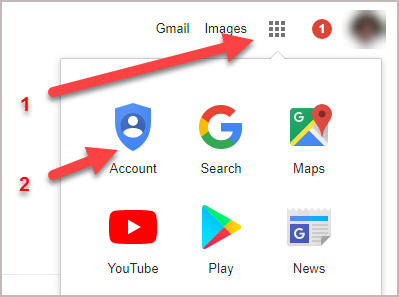
- This will open a list of Google apps and services. Next, click on the Account icon to access the account settings.
- Below the Sign-in and Security, click on the Signing into Google

- Under the Password and Sign-in Method, click on the 2-Step Verification button.

- On the next page, please scroll down and look for the Authenticator App and click on it.


- A QR code bar will appear.
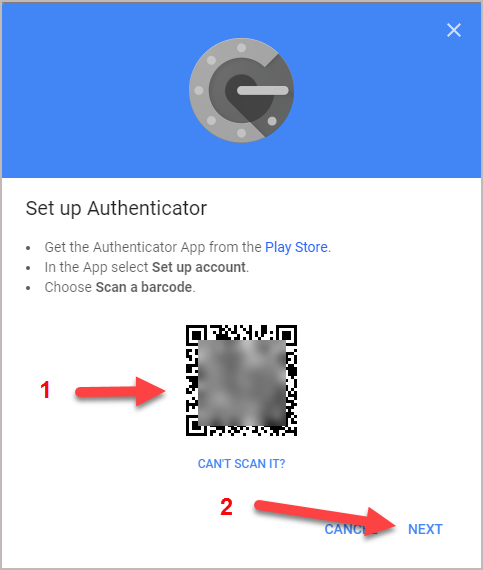
- This time, open the Google Authenticator app that you installed earlier on your new smartphone.

- To add an account on the Authenticator app, tap on the Scan a Barcode.
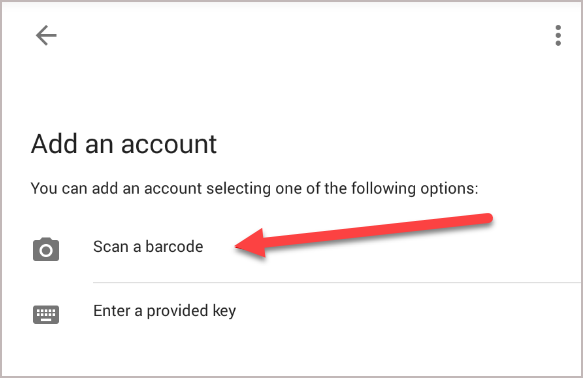
- The app shall ask for permission to use your camera. Then, just tap OK or Allow to launch the camera.
- Point the camera on the web browser’s QR code bar.
- The Authenticator will then show an authentication code. Type it in immediately on the web browser and click Verify or Done.
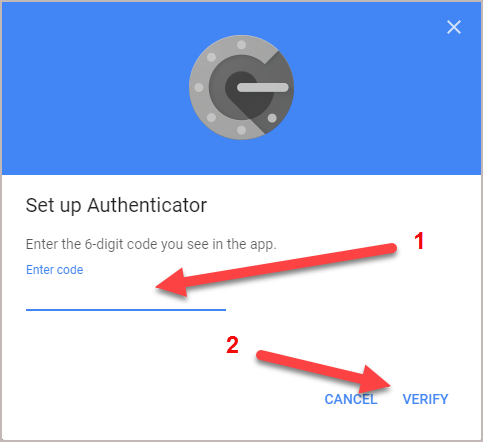
- That’s it. Your new smartphone can now provide you fresh authentication code each time you need one.
Every time you log in to your Google account on a different device, you can get a new authentication code using the app. This is useful if you can’t access your SIM card to receive an SMS or a phone call.
Features of Google Authenticator
Here is a list of features and what the Google Authenticator app can provide you. This will be helpful if you want to know more about Google’s app.
- The app can provide an authentication code even if without internet data.
- This app is compatible with different service providers.
- It also works for many accounts using one Android app. That means you can also use a single Authenticator app and manage multiple accounts on your one phone.
- The app also works on Android Wear.
- Easy to set up via QR code scanning.
- It comes in two themes: light and dark mode.
- Google created this app, so this means that the service is reliable and secure.
FAQ
>As a matter of first importance, don’t do anything to duplicate Google Authenticator on your old device. Leave it for now, or you may get captured without an approach to enter 2FA codes before your new phone is set up. Instead, start by installing the Authenticator on your new gadget—either Google Authenticator for iPhone or Android.
>Next, you’ll need your PC. Open Google’s 2-Step Verification page in a program and sign in to your account when it asks you. Then, in the “Authenticator application” segment of the page, click “Change Phone.”
>Google’s 2-Step Verification site page with the “Change Phone” choice called attention to.
>Pick the sort of phone you are moving to and click “Next.”
>The Google Authenticator screen where you pick “iPhone” or “Android.”
>You should now observe the “Set up Authenticator” screen, total with the barcode. Open the Google Authenticator on your new phone and follow the prompts to check the barcode. Tap “Setup,” and afterward, “Scan Barcode.”
>The Authenticator app screen on the phone, where you tap “Output a Barcode.”
>After the output, you’ll need to enter the one-time verification code to check it’s working.
>On your new smartphone, log in to your Google account. Since you still have the Authenticator on your old device, you will need to get the authentication code from there. If not, use the registered phone number to receive the >Authentication code via SMS or phone call.
>Once you have logged into your Google account on the new iPhone, launch Play Store on it.
>Now Search for the Google Authenticator app on Play Store.
>Tap the Install button.
>On your PC, open any web browser (preferably Google Chrome) and log in to your account if you have not done it yet.
>You will need a verification code from the old smartphone again to do this.
>When your account is finally logged in on the web browser, open a new tab and click on the 9-dots button on the top left corner of the screen.
>This will open a list of apps and services. Click on the Account icon to access the Google account settings.
>Below the Sign-in and Security, click on the Signing into Google.
>Under the Password and Sign-in Method, click on the 2-Step Verification button.
>On the next page, scroll down and look for the Authenticator App and click on it.
A QR code bar will appear.
>This time, open the Google Authenticator app that you installed earlier on your new smartphone.
>To add an account on the Authenticator app, tap on the Scan a Barcode.
The app shall ask for permission to use your camera. Then, tap OK or Allow to launch the camera.
>Point the camera on the web browser’s QR code bar.
>The Authenticator will then show an authentication code. Type it in immediately on the web browser and click Verify or Done.
>That’s it. Your new smartphone can now provide you fresh verification code each time you need one.
If you lost your phone or the phone is eradicated, it would be ideal if you follow these means to recover your Google Authenticator:
>As a matter of first importance, when utilizing Authentication, just because you have to stay quiet, key in a sheltered spot.
>Download the Authenticator once more.
>Enter the secret key manually.
iOS User: then select Android User and choose Add. Then the process is done!
In Conclusion
The Google Authenticator app is a necessity, especially in today’s type of society. Unfortunately, many people want to exploit Google’s weaknesses and use hacked accounts for their own selfish agenda.
The app is basically your second layer of protection, and therefore it will give you safer and reliable security. This translates to all your personal accounts and the apps that you use to access your finances.
Accessing your personal accounts with an added process using a different device may sound tedious. But if you realize how much you can lose without it, you might want to reconsider. After all, what’s an added few clicks as an extra layer of security if it means protecting your personal data and even your life savings? In this fast-growing world, where database leaks are a standing affair, two-step authentication/ two-factor authentication is not an option. It is, in fact, a must because when using two-factor verification, an intruder would need to get both the unique password you came up with and the gadget, which produces the verification codes to break into your account. These backup codes ( six-digit code) protects your user account.
So what do you think about the Google Authenticator app? Do you have apps on your smartphone that have access to your sensitive personal information? Let us know your thoughts in the comment section below. We would love to know more about your impressions regarding the app.
Ask us about Transfer Accounts, Authentication process, export accounts/import accounts, , request for services, default settings, two-factor codes, key code, correction for codes, Security Key, enhanced security, or anything from the article. Feel free to leave your questions down below if you have queries that you want us to answer. We will be more than willing to help you out as much as we can. And do not forget to share this article if this has helped you.
The article is spot on. I’ve been looking to switch to Google Authenticator and it seems like Google is trying to solve the real problem, while their solutions do nothing but provide a lot of flexibility in the future for users. I know the problem will appear as a matter of policy, but I do feel like it is more of a case of poor planning than a matter of security.
In short, it’s not the most simple thing to do. It’s all just a matter of a few iterations of the user experience. I’m not worried about a usability flaw like the one in the article. It’s the best way to integrate Google Authenticator and I hope everyone who uses it can take the time to improve it.